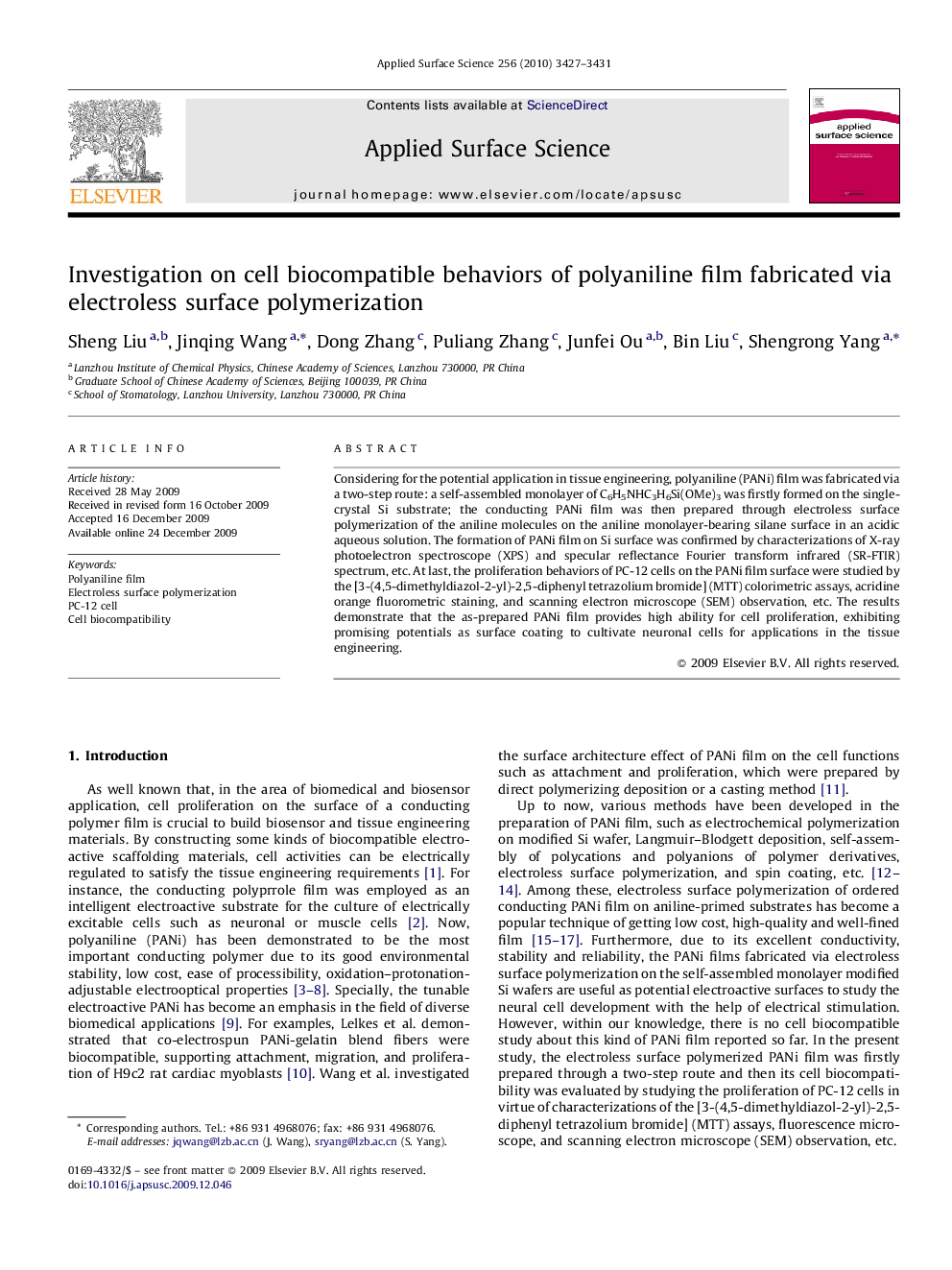| Article ID | Journal | Published Year | Pages | File Type |
|---|---|---|---|---|
| 5358439 | Applied Surface Science | 2010 | 5 Pages |
Abstract
Considering for the potential application in tissue engineering, polyaniline (PANi) film was fabricated via a two-step route: a self-assembled monolayer of C6H5NHC3H6Si(OMe)3 was firstly formed on the single-crystal Si substrate; the conducting PANi film was then prepared through electroless surface polymerization of the aniline molecules on the aniline monolayer-bearing silane surface in an acidic aqueous solution. The formation of PANi film on Si surface was confirmed by characterizations of X-ray photoelectron spectroscope (XPS) and specular reflectance Fourier transform infrared (SR-FTIR) spectrum, etc. At last, the proliferation behaviors of PC-12 cells on the PANi film surface were studied by the [3-(4,5-dimethyldiazol-2-yl)-2,5-diphenyl tetrazolium bromide] (MTT) colorimetric assays, acridine orange fluorometric staining, and scanning electron microscope (SEM) observation, etc. The results demonstrate that the as-prepared PANi film provides high ability for cell proliferation, exhibiting promising potentials as surface coating to cultivate neuronal cells for applications in the tissue engineering.
Related Topics
Physical Sciences and Engineering
Chemistry
Physical and Theoretical Chemistry
Authors
Sheng Liu, Jinqing Wang, Dong Zhang, Puliang Zhang, Junfei Ou, Bin Liu, Shengrong Yang,
